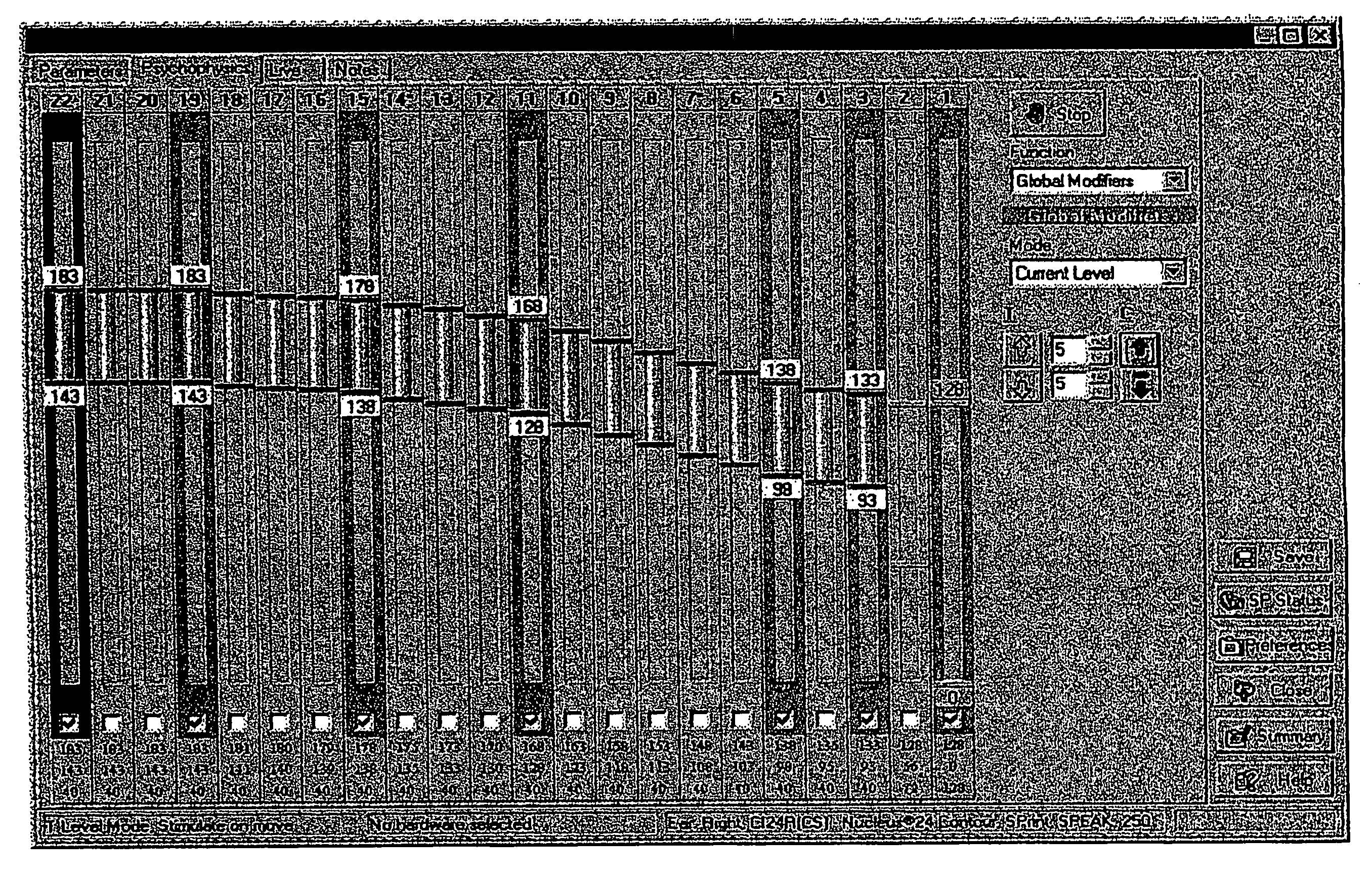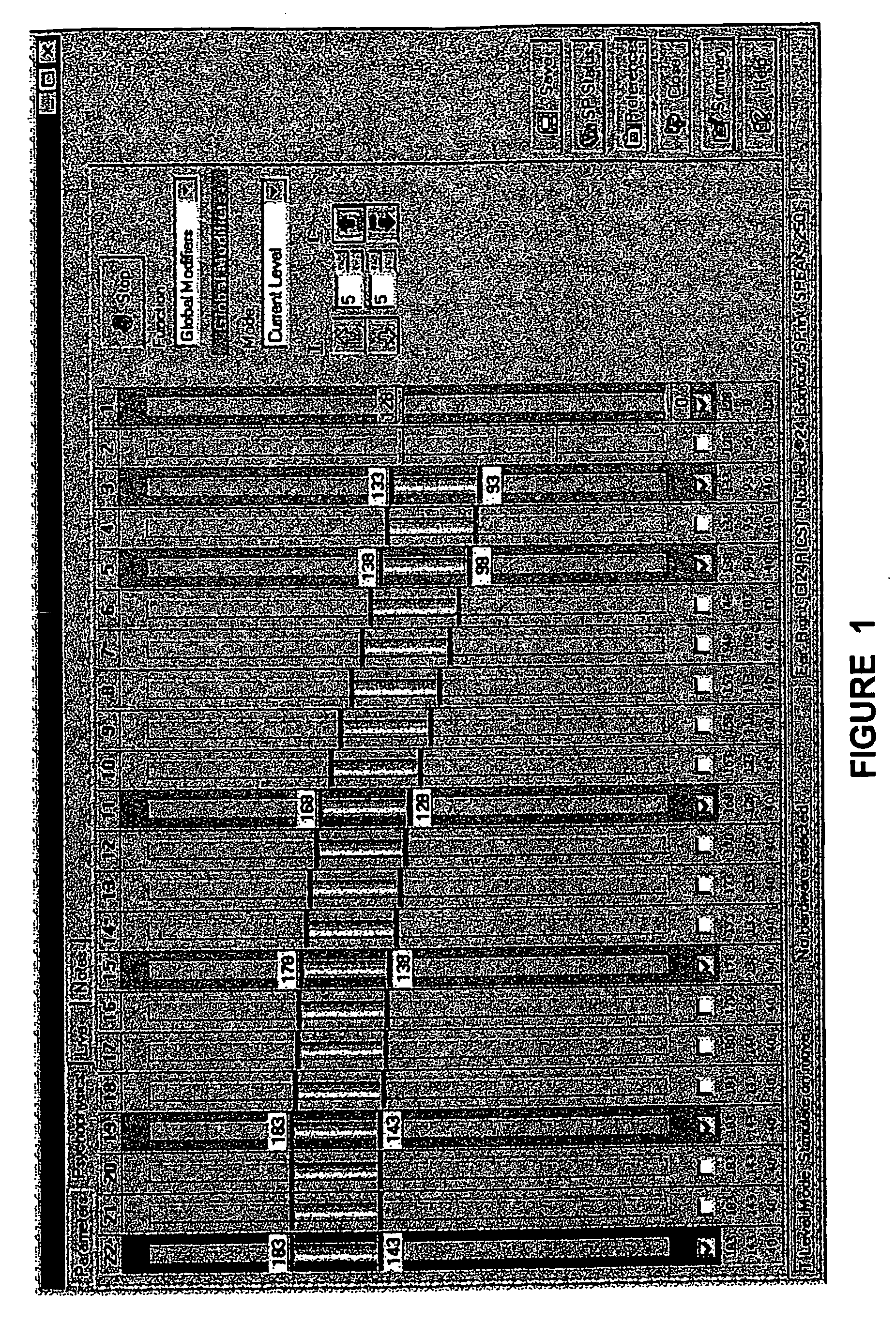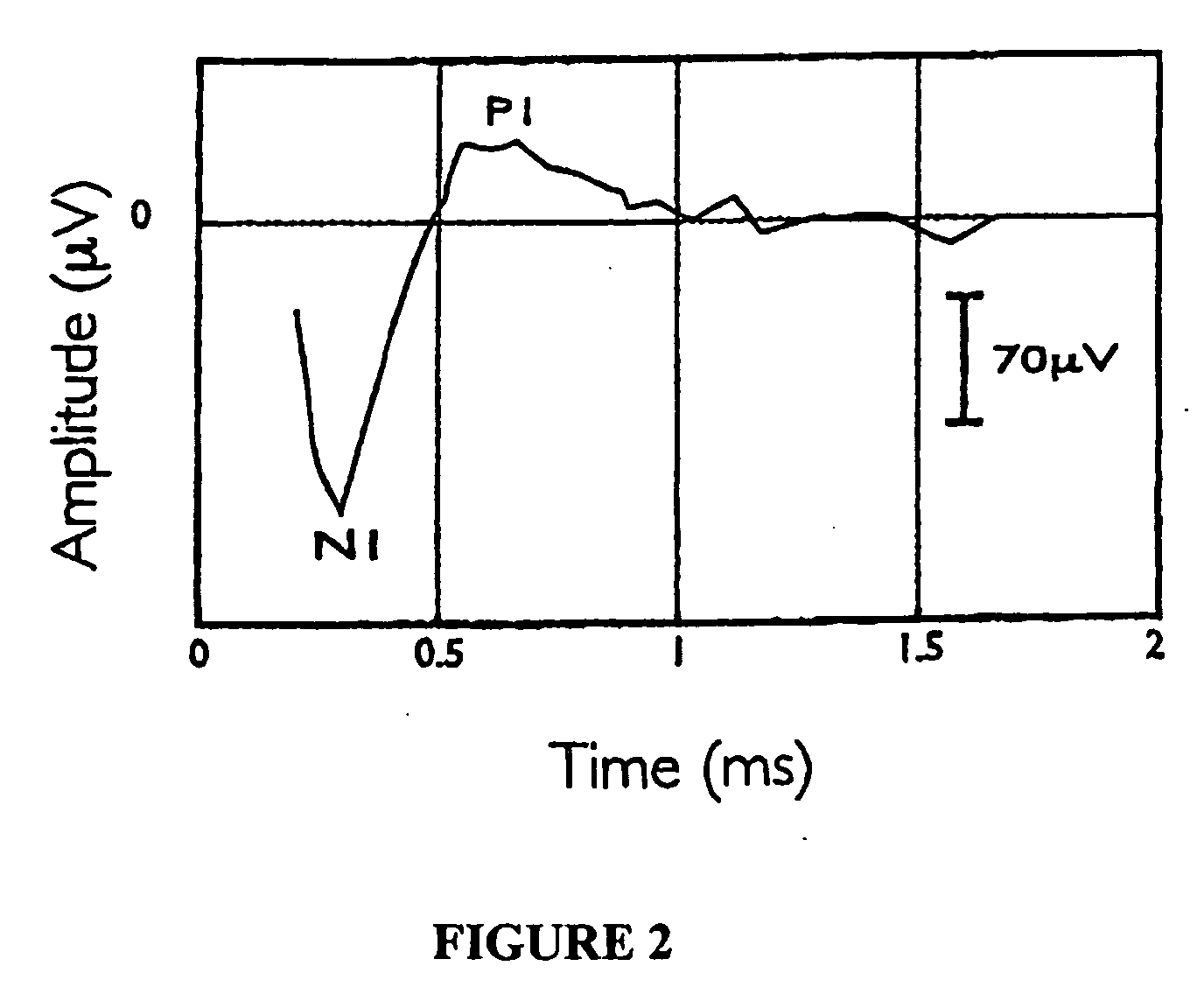Parametric fitting of a cochlear implant
a cochlear implant and parametric technology, applied in the field of clinically fitting a cochlear implant, can solve the problems of non-optimal fitting of the implant, time-consuming process, and complicated aspects
- Summary
- Abstract
- Description
- Claims
- Application Information
AI Technical Summary
Benefits of technology
Problems solved by technology
Method used
Image
Examples
Embodiment Construction
[0061] The following description is directed to a cochlear implant system having an electrode array, in particular an array having twenty-two intracochlear electrodes. It will be appreciated that the invention has potential applicability to any auditory stimulation system utilising an electrode array and in particular to electrode arrays comprising less or more electrodes than that described herein.
[0062] Throughout the specification a channel is considered to be a pair of electrodes that provide a path for current to flow . One electrode is called the active electrode and the other is called the reference electrode. Pulses of current flow from the reference to the active electrode and back again to stimulate nearby nerves. Our implant provides up to 22 channels.
[0063] In order to better understand the present invention, it is appropriate to firstly consider one method of programming a cochlear implant and creating a map which enables the speech processor to output data in a form ...
PUM
 Login to View More
Login to View More Abstract
Description
Claims
Application Information
 Login to View More
Login to View More - R&D
- Intellectual Property
- Life Sciences
- Materials
- Tech Scout
- Unparalleled Data Quality
- Higher Quality Content
- 60% Fewer Hallucinations
Browse by: Latest US Patents, China's latest patents, Technical Efficacy Thesaurus, Application Domain, Technology Topic, Popular Technical Reports.
© 2025 PatSnap. All rights reserved.Legal|Privacy policy|Modern Slavery Act Transparency Statement|Sitemap|About US| Contact US: help@patsnap.com



